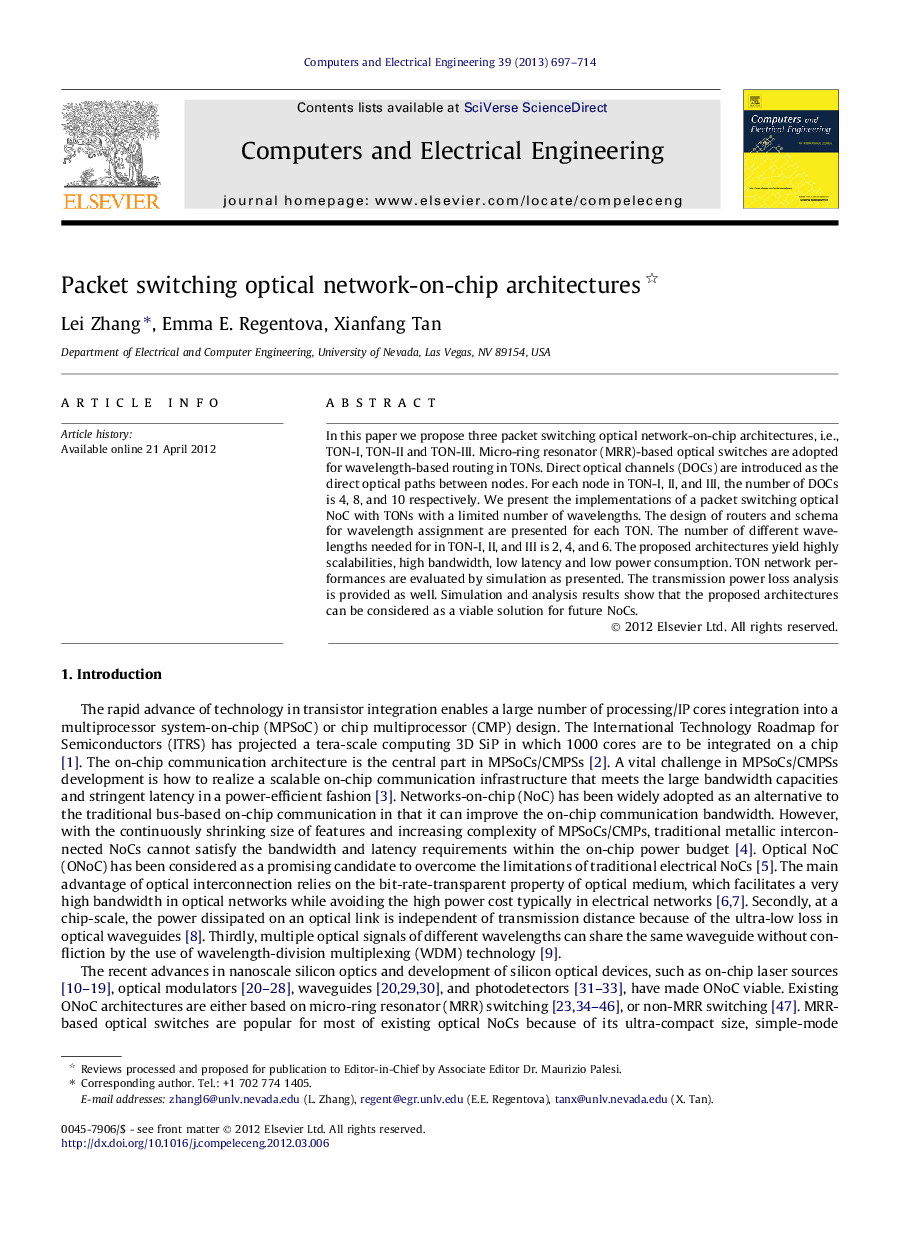| Article ID | Journal | Published Year | Pages | File Type |
|---|---|---|---|---|
| 455073 | Computers & Electrical Engineering | 2013 | 18 Pages |
In this paper we propose three packet switching optical network-on-chip architectures, i.e., TON-I, TON-II and TON-III. Micro-ring resonator (MRR)-based optical switches are adopted for wavelength-based routing in TONs. Direct optical channels (DOCs) are introduced as the direct optical paths between nodes. For each node in TON-I, II, and III, the number of DOCs is 4, 8, and 10 respectively. We present the implementations of a packet switching optical NoC with TONs with a limited number of wavelengths. The design of routers and schema for wavelength assignment are presented for each TON. The number of different wavelengths needed for in TON-I, II, and III is 2, 4, and 6. The proposed architectures yield highly scalabilities, high bandwidth, low latency and low power consumption. TON network performances are evaluated by simulation as presented. The transmission power loss analysis is provided as well. Simulation and analysis results show that the proposed architectures can be considered as a viable solution for future NoCs.
Graphical abstractFigure optionsDownload full-size imageDownload as PowerPoint slideHighlights► We propose a set of packet switching optical network-on-chip architectures, i.e., TON. ► TON is built based on the micro-ring resonator (MRR) with the passive wavelength routing. ► We introduced the direct optical channel (DOC) which is the direct optical paths that can bypass intermediary nodes. ► We provide the router design and routing wavelength assignments scheme. ► We evaluate the TON network performances with simulation.
